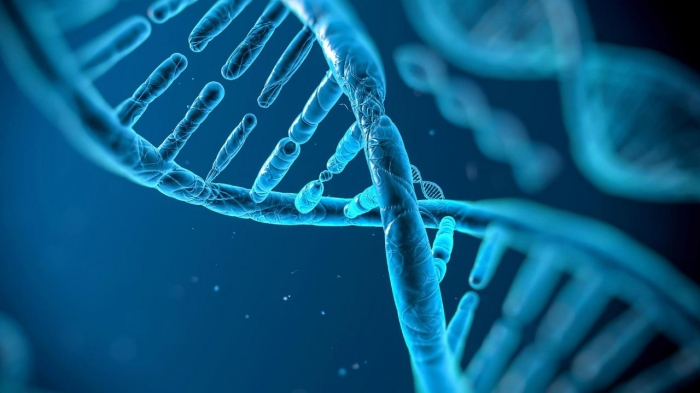Step backwards through time and generations of animals, from sponges and jellyfish, to complex single cells, and finally to simple cells, and you'll arrive at a conundrum.
If replicating genes need energy, and our metabolism is regulated by enzymes made by genes, how could we have genes without a metabolism, and a metabolism without genes?
One possible solution is that ribonucleic acid (RNA) served multiple roles as a chemical template and a physical structure that performed important jobs, such as catalysing the reactions necessary for the first primitive cells.
This is the basis of the RNA world hypothesis, an idea cooked up in the 1960s that argued life emerged from Darwin's "warm little pond" of complex organic chemicals in the form of nucleic acid polymers that were both codes and molecular machines.
The idea addresses the paradox, but isn't without its own slew of problems, including the sheer complexity of long RNA polymers forming on their own, especially in a world where a key component, phosphate, was rare.
That's not to say short strings of RNA were incapable of forming on their own, with all signs suggesting that we had the conditions on ancient Earth to at least provide their basic building blocks.
But when it comes to which came first, there is a growing body of evidence to suggest simple forms of metabolism could have been churning away, unshackled by RNA and proteins.
Now, Gustavo Caetano-Anollés from the University of Illinois and his colleague Ibrahim Koc from Gebze Technical University in Turkey have found even more reason to think that life started metabolising before it was linked into the first genes.
The pair used a database of genomes from the Gene Ontology Consortium, selecting 249 organisms from all over the tree of life and comparing not just their sequences, but the specific functions of each of their genes.
"The best way to understand an organism is through its functions," said Caetano-Anollés.
In simple terms, they reasoned functions that developed more recently in evolutionary history – such the processes that give rise to our nervous systems – would be shared by fewer organisms.
By the same token, the more common the function, the further back we can trace its development.
At the very base of this branching tree are two functions which are common to every living thing – metabolism and binding.
"It is logical that these two functions started very early because molecules first needed to generate energy through metabolism and had to interact with other molecules through binding," said Caetano-Anollés.
Combining this discovery with other evidence for the "metabolism first" hypothesis, we can imagine life emerged as short sections of RNA integrated with energy-releasing reactions that already existed, developing primitive genes that helped bind together other molecules before building into more complex forms.
"Organisms probably replaced chemical reactions already going on in the planet and internalised them into cells through development of enzymatic activities," said Caetano-Anollés.
The duo believes their processes could be used not just to rewind the clock, but to identify patterns that provide a glimpse of how our genes could develop new functions, or to engineer them based on clues on how they used to behave.
As Caetano-Anollés puts it, "The best way to reengineer biological molecules with novel and useful molecular functions is to learn principles from clues left behind in their past."
There's no doubt that this won't be the final word on the debate on whether metabolism proceeded independently of RNA, or if strings of nucleic acid were forming and then acting as catalysts.
But studies like these are slowly filling in the blanks to reveal the amazing, and complicated, story of life.
More about:
















































